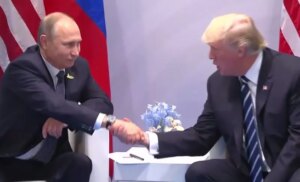The Truth Behind the Ukraine Crisis: Analyzing Recent Developments and Perspectives

As the geopolitical landscape shifts, the narrative surrounding the war in Ukraine is becoming increasingly contentious. Here at Extreme Investor Network, we aim to shed light on the complexities of this conflict, moving beyond the surface-level headlines to offer a deeper understanding of the forces at play.
A New Perspective on U.S.-Ukraine Relations
Recently, former President Donald Trump made headlines by criticizing Ukrainian President Volodymyr Zelensky on social media. He argued that Zelensky has manipulated the Biden administration for his own gain, claiming that the Ukrainian leader is more adept at playing politics than addressing the dire situation facing his nation. Trump did not hold back, accusing Zelensky of behaving like a dictator and denying his people the electoral rights they deserve.
This shift in U.S. sentiment marks a significant turning point. Whereas the mainstream media frames Ukraine as a victim in need of rescue, Trump contends that there are deeper issues at play—issues that have seen the U.S. funnel billions in aid while Zelensky faces accusations of mismanagement and corruption.
The Underlying Causes of the Conflict
To fully grasp the current dynamics, we must revisit the events leading to the war, particularly those from 2014. The West’s support for the Maidan protests, which sought to remove democratically elected President Viktor Yanukovych, sparked widespread civil unrest and set the stage for Russia’s annexation of Crimea. Understanding this backdrop is crucial for any analysis of the ongoing conflict.
Additionally, Putin has long argued that he viewed the war as a defensive initiative. He believes that the origins of the conflict stretch far beyond the Russian invasion and are rooted in Western interventions that aim to destabilize his country.
Zelensky: A Puppet or a Leader?
Critics of Zelensky argue that since his election in 2019, he has failed to pursue peace and has instead become a pawn of Western interests. While he campaigned on a platform of reform and reconciliation, his actions post-election appear to contradict those promises. Moreover, the overwhelming financial aid the U.S. has provided raises questions about where that money has truly gone. As Trump pointed out, many are left wondering how much assistance has tangibly helped the Ukrainian people.
Is Zelensky genuinely representing the interests of Ukrainians, or has he sold out his nation for the sake of international attention and support? This is a critical question as we examine this region’s future.

The NATO Debate and Strategic Implications
One of the most contentious issues surrounding the Ukraine crisis is NATO’s eastward expansion. Despite claims of being a defensive alliance, Trump echoed sentiments that NATO has provoked an already tense situation with Russia over the years. The former President’s comments were not just political rhetoric; they reflected an acknowledgment of the complex history that has led to military tensions.
The reality is that strategic blunders on both sides have exacerbated the crisis. The question remains: can dialogue and a reassessment of NATO’s role facilitate a peaceful resolution?
A Divide in European and American Perspectives
The divergence of opinions regarding Zelensky’s leadership and NATO’s involvement is causing rifts between the United States and Europe. European leaders are growing increasingly frustrated with Trump’s criticisms, which lack the diplomatic nuance typically expected in international relations. The divide illustrates a critical reality: the West is at an inflection point, one where the future of NATO and its strategies could significantly impact global stability.
Conclusion: Examining the Path Forward
As we look toward the future, it’s essential to consider whether the current trajectory of U.S.-Ukraine relations will lead to resolution or further conflict. The voices calling for dialogue, diplomacy, and a reevaluation of foreign aid are becoming more robust. At Extreme Investor Network, we encourage our readers to engage in discussions that interrogate widely accepted narratives and explore the underlying causes of conflict.
Understanding these dynamics not only enriches the conversation but equips investors and the public alike with the knowledge necessary to navigate the geopolitical landscape.
As we move closer to potential turning points in this conflict, we remain vigilant, seeking clarity and truth in a landscape often muddied by competing interests. The time is ripe for serious reflection and informed dialogue about the future of Ukraine, its leadership, and its role in an increasingly multipolar world.

